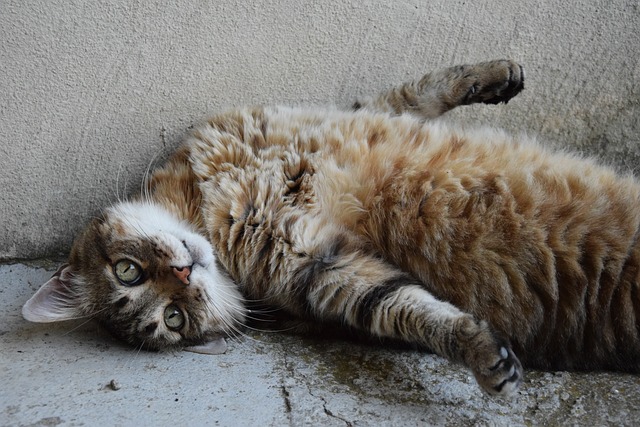Exploring non-surgical fat reduction? This comparison highlights key differences between CoolSculpting and liposuction. CoolSculpting uses cold temperatures to freeze and eliminate fat cells without incisions or recovery, ideal for specific problem areas. Liposuction involves suction and precise removal of fat, offering quicker results but with risks like scarring. The best choice depends on individual preferences, budget, and desired speed of results.
Understanding Non-Surgical Fat Reduction: An Overview

CoolSculpting: The Frozen Fat Approach

CoolSculpting represents a non-surgical fat reduction approach that utilizes cryolipolysis, or “frost and fat,” technology. This method involves applying controlled cooling to targeted areas, specifically targeting fat cells while leaving surrounding tissue unharmed. The process is typically non-invasive, requiring no incisions or anesthesia, making it an attractive alternative for those seeking a less drastic procedure than traditional liposuction.
Unlike traditional liposuction that physically removes fat cells, CoolSculpting works by crystallizing and freezing them. Over time, the frozen fat cells are naturally processed and eliminated from the body through its lymphatic system. This gentle approach has been shown to be effective in reducing fat in problem areas like love handles, belly bulges, and chin fat, offering a more convenient and recovery-free option for individuals looking to trim down without surgery.
– How does CoolSculpting work?

CoolSculpting is a non-surgical fat reduction procedure that uses controlled cooling to eliminate stubborn fat cells. During the treatment, a device is applied to the target area, typically the abdomen, love handles, or thighs. This device delivers precise cold energy, which freezes and destroys fat cells without damaging surrounding tissues. The body then naturally processes and eliminates these dead fat cells, leading to measurable results over time.
Unlike traditional liposuction, CoolSculpting offers a non-invasive approach with minimal downtime. It is suitable for individuals seeking a localized fat reduction solution. While it may not be as drastic as surgery, CoolSculpting provides a safe and effective alternative for those who want to shape their body without incisions or extensive recovery periods.
– Benefits and potential outcomes

CoolSculpting and traditional liposuction both offer non-surgical fat reduction options, but they have distinct benefits. CoolSculpting uses cryolipolysis to freeze and eliminate targeted fat cells, resulting in inch loss and a more contoured figure. One advantage is its non-invasive nature, making recovery time minimal compared to surgical procedures. It’s suitable for individuals with diet and exercise-resistant fat deposits.
Liposuction, on the other hand, involves suctioning fat from specific areas using a cannula. It offers precise fat removal, making it ideal for those seeking more dramatic results in problem zones. While liposuction has its merits, it is an invasive procedure carrying potential risks and downtime for healing.
– Candidate suitability

When considering non-surgical fat reduction options like CoolSculpting and traditional liposuction, understanding candidate suitability is paramount. These procedures are not one-size-fits-all; their effectiveness varies based on individual factors.
CoolSculpting, for instance, uses cold therapy to target and freeze fat cells, making it ideal for those with localized fat deposits seeking a non-invasive approach. Liposuction, however, involves suction to remove fat, rendering it more suitable for individuals looking for substantial fat reduction across specific areas. Patient health, lifestyle, and skin elasticity also play significant roles in determining the best course of action.
Traditional Liposuction: Invasive yet Effective

Traditional liposuction is an invasive yet effective procedure for non-surgical fat reduction. This method involves making small incisions in the skin and using a suction device to remove targeted fat cells from specific areas of the body. It offers several advantages, such as precise control over the treatment area and immediate results. However, it also comes with risks like scarring, bleeding, and potential nerve damage, requiring patients to follow strict post-operative care instructions.
Compared to non-surgical alternatives like CoolSculpting, traditional liposuction provides more direct and targeted fat reduction. While CoolSculpting uses cold therapy to freeze and eliminate fat cells over time, liposuction offers quicker and more dramatic results for those seeking rapid changes in their body contour. The choice between the two often depends on individual preferences, budget, and specific body areas requiring treatment.
– Surgical process explanation

CoolSculpting and traditional liposuction are both procedures aimed at non-surgical fat reduction. During liposuction, a surgeon makes small incisions in the skin and uses a vacuum to suck out excess fat cells. This method is often associated with quicker results but carries risks like scarring, bleeding, and anaesthesia-related complications.
In contrast, CoolSculpting uses cryolipolysis, where cold temperatures are applied to target fat cells. The procedure is non-invasive, pain-free, and typically takes about 35 minutes. Unlike liposuction, CoolSculpting does not require any incisions or recovery time, making it a more comfortable option for many individuals. However, the results may take several weeks to become apparent, and multiple sessions might be needed depending on the amount of fat to be reduced.
